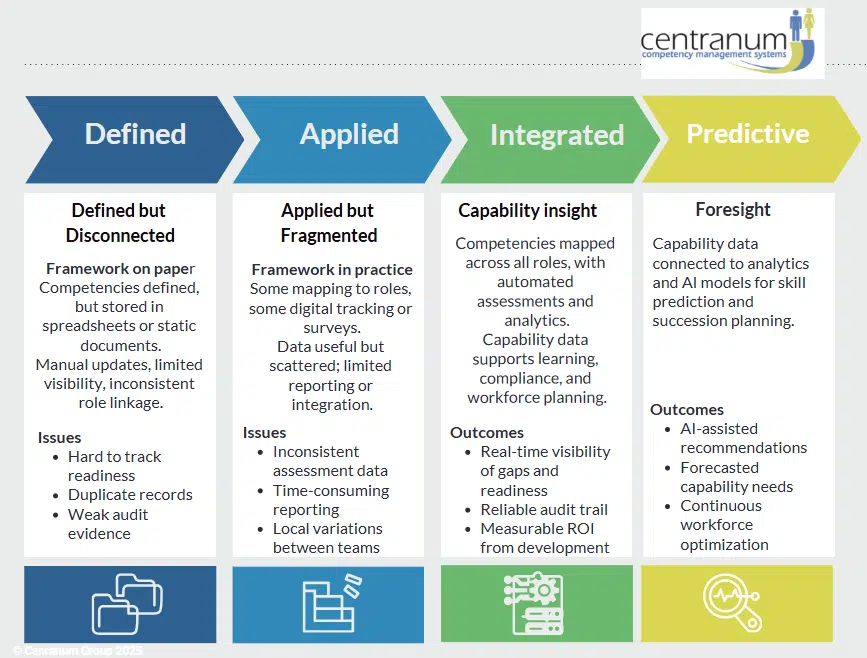Capability Framework Maturity | From Framework to Insight
How organisations move from static frameworks to live capability data that drives performance, assurance, and workforce readiness
Most organisations have already defined the competencies and capabilities their people need.
The challenge is operationalising those frameworks — linking them to job roles, assessments, and development data to create measurable workforce insight.
This page explains the typical stages of capability maturity and includes tools you can use to benchmark your progress.
Why Capability Maturity Matters
As businesses evolve, frameworks built to describe capability often remain static — spreadsheets on shared drives or documents in HR systems.
They define what good looks like but don't provide the data to prove it.
Moving up the capability maturity curve means connecting those frameworks to roles, assessments, and learning — producing evidence of competence and readiness for both performance and compliance. Capability frameworks only deliver value when they're embedded in daily operations.
A mature capability system gives you:
- Consistent role and capability definitions across all business units.
-
Visibility of workforce competence and gaps.
-
Measurable links between development activity and outcomes.
-
Confidence for audits, accreditation, and client assurance.
The Capability Maturity Ladder
tage Summaries
1. Defined but Disconnected
Frameworks exist, but live in spreadsheets or static documents.
Visibility is limited, updates are manual, and evidence is fragmented.
2. Applied but Fragmented
Some mapping and assessment activity happens, but data is scattered across systems.
Reporting is time-consuming and inconsistent.
3. Integrated and Insight-Driven
A single system connects roles, competencies, assessments, and development.
Dashboards show readiness and compliance status in real time.
4. Predictive and AI-Ready (optional future state)
Capability data powers analytics and AI — forecasting gaps, supporting workforce planning, and aligning learning investments with strategy.

Every organisation is somewhere on the capability maturity curve — from defined to predictive.
Where are you now, and what's next?
Benchmark Your Organisation
Use our Capability Framework Maturity Checklist to see where your organisation stands and identify practical next steps.
It's a quick self-diagnostic that outlines the three core stages, indicators for each, and simple actions to improve capability data quality.
Example in Practice
From Framework to Measurable Capability
See how one organisation moved from spreadsheet tracking to a fully integrated capability system.
The case overview shows how digital mapping and analytics cut audit preparation time by 70 % and improved role clarity across departments.
→ Read the Case Overview
Next-Level Readiness
Once frameworks are connected, capability data becomes a strategic asset.
Our short briefings explain what comes next:
Capability & Risk Management – The Missing Link
AI Readiness Through Capability Data
